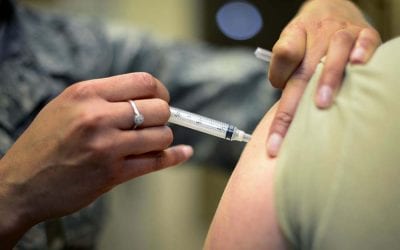TSA (Transportation Security Administration) spokeswoman Suzanne Trevino stated in August of this year, referring to the images produced by the full body scanners in airports, “Our images can’t be printed, stored or transmitted.”
An August 6, 2010 entry in the TSA Blog states, “As we’ve stated from the beginning, TSA has not, will not and the machines cannot store images of passengers at airports. The equipment sent by the manufacturer to airports cannot store, transmit or print images and operators at airports do not have the capability to activate any such function.”
The problem with those statements is that the Electronic Privacy Information Center (EPIC) has uncovered TSA documents which show those statements aren’t exactly supported by the TSA’s own equipment specifications.
Last week, my column, What’s the real lowdown on the Full Body Scanners? discussed the scanners’ privacy, safety, efficiency, and whether or not they actually improve air security. This week, there is new information available which puts the veracity of TSA’s statements about their scanners into serious question.
EPIC has uncovered two TSA documents, TSA Operational Requirements Document, Whole Body Imager, Aviation Applications, and TSA Procurement Specification for Whole Body Imager Devices for Checkpoint Operations.
You can read them for yourself. In particular, look at the “Procurement Specification” on page 7, Section 3.1.1.3.6, Network Interface. TSA requires each full body scanner to have a full TCP/IP network interface, able to run at a speed up to 100MB/S.
Then scroll down to page 10, Section 3.1.1.5.1, Data Storage/Transfer. TSA requires each full body scanner to have a USB (Universal Serial Bus) interface capable of data transfers to and from the scanner. Moreover, each scanner must have enough storage capacity to store a year’s worth of data.
According to the document, “All necessary software drivers and operating system services to support the data collection devices shall be preinstalled and preconfigured.” Apparently the operating system is an embedded version of Microsoft Windows XP, and we all know how “strong” its security is.
With each full body scanner having a full 100Base-T network interface, USB Interface, and a high capacity hard drive, it boggles my mind how TSA can categorically state the scanners can’t store, transmit or print images.
With the security vulnerabilities of Microsoft Windows XPe, coupled with a USB interface, it doesn’t take much of a leap to be seriously concerned about unscrupulous TSA agents surreptitiously plugging a USB memory key into one of the scanners, and off loading scans of starlets, politicians, and other prominent people, as well as ordinary citizens.
TSA has a safety factsheet about the advanced imaging technology used by their full body scanners. It’s polished, well written, and cites the evaluation of the scanners by major authorities, including the renown Johns Hopkins University Applied Physics Laboratory. Of course, no matter what way you read the document, it appears to be nothing more than Swiss Cheese, as it’s full of holes.
The document states MMW scanners produce extremely low levels of electromagnetic pulse energy. That’s true. Unfortunately, there are no specific long term studies of the effect of such radiation from these scanners on humans, and on electronic medical implants such as pacemakers. Without such studies, I question how TSA can declare the MMW scanner safe.
The document states, with regard to backscatter x-ray scanners, that “All results consistently confirm that radiation doses are well below the limits specified by the standard established by the American National Standards Institute and through the Health Physics Society” I have no doubt that’s true, but it doesn’t mean the units are safe. Since the effect of x-ray radiation on humans is cumulative, the safety of these units is affected by the unknown cumulative dose of radiation each passenger has received prior to scanning.
Finally the document states that passengers can “opt out” of scanner screening and submit to alternate screening. The problem with that it is, as I have observed, it isn’t true. TSA says that notices are posted at the airport scanner lines which state, “Use of this technology is optional.” I saw no such notice anywhere in the Louis Armstrong New Orleans International Airport at TSA security, last month. I observed no TSA security agent telling passengers who went into the scanner line that they could “opt out.”
World famous security guru, Bruce Schneier has averred the same thing. He has made a written declaration to the US Court of Appeals for the District of Columbia Circuit that while going through TSA security at Boston’s Logan International Airport, he was instructed to go through a full body scanner device, not verbally offered alternative security screening, and saw no signs indicating you could opt out of full body scans.
I think it’s time for the President to intervene. This mess is part of the executive branch “gone wild.”
Mr. Obama needs to put an immediate moratorium on new scanners, mothball existing units until more is known about their safety, and have TSA and Homeland Security work out reasonable and Constitutional methods to bring safety and security to air travel.
After many years working in corporate America as a chemical engineer, executive and eventually CFO of a multinational manufacturer, Ned founded a tech consulting company and later restarted NSL Photography, his photography business. Before entering the corporate world, Ned worked as a Public Health Engineer for the Philadelphia Department of Public Health. As a well known corporate, travel and wildlife photographer, Ned travels the world writing about travel and photography, as well as running photography workshops, seminars and photowalks. Visit Ned’s Photography Blog and Galleries.


